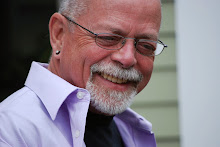Saturday, May 24, 2014
The judges, our sexuality, one giant classroom, Gallup
Tuesday was Pennsylvania’s, Monday was Oregon’s. I understand that Wisconsin and Florida and other states are in the near future.
I went to a sandwich shop when I left the Y on Tuesday, and I found a copy of the decision from Judge John E. Jones III declaring Pennsylvania’s same-sex marriage ban unconstitutional, and read the first half of it. I enjoy these decisions every time I stop my life long enough to read one, which should teach me to read all of them as they come out, but I don’t, because I’m busy and I think I have things to do that are more important but I don’t. I get two or three major things from one of these opinions. Good things to read on this sequence of judgments are Jay Michaelson in The Daily Beast, and Greg Botelho, of CNN Justice.
This decision by Judge Jones was lovely. (I finished reading it Tuesday night.) Short—39 pages—and well written, and very clear as it led the rest of us, non-lawyers, through the steps Judge Jones took to get to his decision. He was telling us why he decided this case this way. It was not poetic, and it was not philosophical, except at the end, when he wrote, “We are a better people than what these laws represent and it is time to discard them into the ash heap of history.” The great middle of his opinion is clear and reasonable and very persuasive. These matters are way too important to be left to lawyers. As I have said, these court cases, the best of them, contribute to an unexpected consequence whose importance we probably won’t recognize for years. They are constructing a definition of sexuality out of the Constitution and Windsor and these district court cases, which we are going to have to live with for generations, when all of us would over the long run be more comfortable with a description of our sexuality constructed, like Kinsey’s great studies, out of thousands and thousands of interviews of the people. For the danger in this, see Stonewall Triptych, It ain’t necessarily so, [February 29, 2012] and It still ain’t necessarily so [June 7, 2013].
Aside from the particulars of Judge Jones declaring Pennsylvania’s Marriage Laws to be unconstitutional, which have been fully discussed by Ari Ezra Waldman, who writes for Towleroad, here, and here, I was struck by what all these judges are doing for our perception of our nation. Just about everybody is aware of Justice Ruth Bader Ginsburg’s belief that the decision of the Supreme Court which recognized the right to abortion for American women, Roe v. Wade, in 1972, was correctly decided in its conclusion, but it got there by the wrong path and it was wrongly applied, by which she means apparently, it would have been better for women and the country if the Court had limited its decision in some way, sent it back to the states for them to work with for a while, and allowed the idea of a right to abortion time to find an audience and a population of supporters. (See Sahil Kapur in Talking Points Memo on this matter.) Many people believe that this is behind the Court’s reasoning in not going the extra step when Justice Kennedy wrote the decision in United States v. Windsor. Justice Kennedy may have limited the application of his decision in order to allow time and space for his decision to percolate through the states and to develop adherents and a committed population of supporters. This is exactly what has happened, in the eleven months since Kennedy passed up the opportunity to make a sweeping national decision on marriage equality in United States v. Windsor.
At the invitation of the Supreme Court, the district judges around the country have been conducting a grand class for the rest of us—a distributed classroom, to be sure— in which, a judge in each state, a native of that state, even in states we would never have thought were receptive to it, announces that he or she has heard the best of the local arguments against marriage equality and have found them inadequate to satisfy the Constitution. First, it was Utah, then Oklahoma, then Kentucky, then Virginia, Texas, Michigan, Ohio, Arkansas, Idaho, then Oregon, and onTuesday of this week, it was Pennsylvania, and the cumulative effect of these decisions in the various states around the country—12 federal district courts in all—is that the whole country seems to be beginning to move in that direction. Gallup announced Wednesday that polling May 8-11 now finds 55% in favor of marriage equality. The court cases are riding the tide of public approval. This is what Justice Bader Ginsberg may have had in mind. Give them time and space to teach themselves, to learn what they need to know, for the next great experiment in democracy. It’s an idea whose time has come, finding expression in the opinions of district courts and in the results of the Gallup organization. This movement can’t be reversed.

0 comments:
Post a Comment